Midweek Review
With somewhat muddled foreign policy where are we heading?
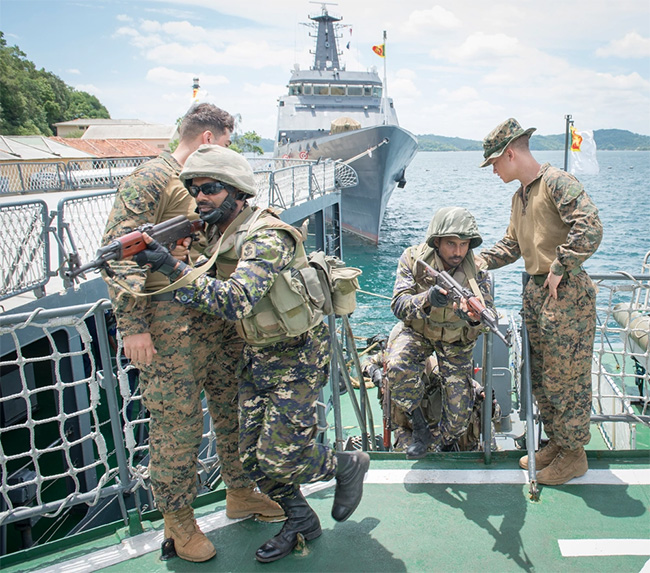
By Shamindra Ferdinando
The Sri Lanka Navy will take command of Combined Task Force (CTF) 154 from the Egyptian Navy soon. Since its establishment in May 2023, US (Capt. Oliver Herion), Jordan (Capt. Ayman Al Naimat) and Egypt (Commodore Haytham Elsayed Khalil), respectively, commanded the unit, one of the five Task Forces that operated under the purview of the US-led Combined Maritime Forces (CMF).
The whole operation is spearheaded by Bahrain headquartered US Fifth Fleet. SLN, under the previous regime led by Ranil Wickremesinghe, joined the CMF in 2023 as its 39th member. Meanwhile, strange bedfellow Argentina is the latest addition to it. To make matters worse for that country, Buenos Aires, under eccentric right wing President Javier Gerardo Milei, wants to make the US dollar its official currency..
SLN disclosed the CMF’s move in a press release dated Oct, 02 under the new JVP/NFF regime that dealt with CTF commander Commodore Haytham Elsayed Khalil of the Egyptian Navy meeting Sri Lanka Navy Commander Vice Admiral Priyantha Perera.
CTF 150 focuses on maritime security in the Gulf of Oman and the Indian Ocean, CTF 151 leads regional counter-piracy efforts, CTF 152 handles maritime security in the Arabian Gulf, CTF 153 is responsible for operations in the Red Sea, and CTF 154 is tasked with training, thereby improving operational capabilities to enhance maritime security in the Middle East.
The CMF’s overall strategy should be examined taking into consideration the widening of the Middle East conflict, with Israel simultaneously taking on Hamas (Islamic Resistance Movement) in Gaza, Hezbollah (Party of God) based in Lebanon and Iran widely accused of financing Hezbollah. In the wake of further destabilization of the region as a result of Israeli ground forces entering Lebanon and Iran firing missiles at the Jewish State in retaliation for terrorist acts committed against it, inside Iran, and elsewhere, the US and the UK bombed Yemen where Iran backed Houthis are trying to disrupt ship movements in the Red Sea. Since Israel launched a war against Hamas, in Gaza, and using that as an excuse, is committing acts of genocide against the Palestinians to create a homogeneous Jewis state, Houthis have meanwhile targeted nearly 90 merchant vessels in the Red Sea to force a halt to Israeli terror tactics to drive out or kill the Palestinians. Hezbollah and other resistance groups from Yemen, Lebanon, Syria and Iraq, too, are stepping up attacks to turn the tide against the extremist Jewish state.
Sri Lanka is now ironically among the coalition backing Israel battling Iran and Tehran-backed groups on multiple fronts and thousands of our workers are now employed in the Jewish state because of the extreme poverty here. Did Israel, in spite of knowing the impending Oct. 07, 2023 Hamas raid, targeting Southern Israel, conveniently turn a blind eye to pave the way for a sustained offensive? In other words, did Iran backed groups walk into an Israeli trap. The Israeli onslaught appeared to have been a meticulously planned response. The triggering of explosions in pagers used by Hezbollah, or those in some way connected to it in Lebanon and Syria, in the third week of September, before the killing of Hezbollah Chief Hassan Nasrallah, in Beirut, and the Israeli ground invasion, suggested the Jewish State planned a knockout blow against the Iran-led coalition. What Netanyahu did not bargain for is that the present day resistance is made up of committed fighters unlike the Arab armies that met Jewish state’s terror tactics in earlier wars as in 1948 and 1967. Though the Western media tries to paint Iran as the villain over the whole issue, Iran, nor its proxies, have caused needless bloodletting among Israeli civilians. Two major missile attacks that Teheran has so far carried out against the Jewish state had taken extraordinary measures not to target civilian infrastructure thereby hardly harming any noncombatants there. This is unlike Israel that has caused unimaginable harm to Arab civilians.
Outgoing US President Joe Biden’s suggestion that Israel shouldn’t hit Iranian oil or nuclear sites in response to a massive missile strike but consider other alternatives underscored the gravity of the rapidly developing situation.
Whether the world likes it or not, the war in the Middle East, as well as Ukraine, where the US and its major allies (all part of CMF) are trying to wear down Russia, is being politicized. There cannot be a better example than Republican White House hopeful Donald Trump’s declaration that he believed Israel should strike Iranian nuclear facilities in response to the recent Iranian missile barrage.
Those who had compared the decimation of the Liberation Tigers of Tamil Eelam (LTTE) in 2009 by the Sri Lanka military and the war between Hamas and Israel in the aftermath of the Oct. 07 raids, included New Delhi based Narayan Swamy, who served UNI and AFP during his decades long career. While acknowledging that no two situations were absolutely comparable, Swamy, who currently serves as the Executive Director of IANS (Indo-Asian News Service) declared: “Oct 7 could be a turning point for Hamas similar to what happened to the Liberation Tigers of Tamil Eelam in Sri Lanka in 2006. Let me explain. Similar to Hamas, the LTTE grew significantly over time eventually gaining control of a significant portion of Sri Lanka’s land and coast. The LTTE was even more formidable than Hamas. It had a strong army, growing air force and a deadly naval presence. Unlike Hamas the LTTE successfully assassinated high ranking political figures in Sri Lanka and India. Notably LTTE achieved this without direct support from any country??? Well Hamas received military and financial backing from Iran and some other states [emphasis is mine]. The LTTE became too sure of their victories overtime. They thought they could never be beaten and that starting a war would always make them stronger. But in 2006 when they began Eelam War 1V their leader Velupillai Prabhakaran couldn’t have foreseen that within three years he and his prominent group that the world was led to believe as being virtually invincible, especially by the Western media and so-called military experts, would be defeated. Prabhakaran believed gathering tens of thousands of Tamil civilians during the last stages of the war would protect them and Sri Lanka wouldn’t unleash missiles and rockets. Colombo proved him wrong. They were hit. By asking the people not to flee Gaza, despite Israeli warnings, Hamas is taking a similar line. Punishing all Palestinians for Hamas’ actions is unjust just like punishing all Tamils for LTTE’s actions was wrong. The LTTE claimed to fight for Tamils without consulting them and Hamas claimed to represent Palestinians without seeking the approval for the Oct.7 strike. Well two situations are not absolutely comparable. We can be clear that Hamas is facing a situation similar to what the LTTE faced shortly before its end. Will Hamas meet a similar fate as the LTTE? Only time will answer that question.”
In a way, the circumstances of the ongoing Middle East conflict and the emergence of Tamil terrorism here is so dissimilar, the situations cannot be compared at all.
GoSL stand on ME conflict
In the first week of January, this year, the then President, who is also the Commander-in-Chief, in addition to being the Defence Minister, Ranil Wickremeisnghe, declared his intention to deploy an SLN vessel in the Red Sea in support of the ongoing CMF operations. The specific US-led effort meant to overcome the Houthi challenge was called ‘Operation Prosperity Guardian.’ In spite of statements attributed to various spokespersons at that time, we are still in the dark as to the actual implementation of Wickremesinghe’s directive.
How could Sri Lanka undertake such a costly deployment in the absence of at least one properly equipped vessel to operate in missile and drone environments at a time the Wickremesinghe administration claimed it couldn’t hold Local Government polls for want of sufficient funds?
Why on earth Wickremeisnghe wanted a role for SLN in ‘Operation Prosperity Guardian’, launched in Dec. 2023, when some of Washington’s allies were skeptical about the initiative?
With the further deterioration of the Middle East situation, President Anura Kumara Dissanayake’s government should take stock of the situation. Jathika Vimukthi Peramuna (JVP) and Jathika Jana Balawegaya (JJB) leader AKD, in his capacity as the Commander-in Chief of armed forces and Defence Minister, should receive a comprehensive briefing regarding the current situation.
In the absence of a properly constituted foreign policy, Sri Lanka found itself in a deepening quandary. The armed forces, as well as the JVP that had been at the receiving end, in 1971 and 1987-1990, of the counter-insurgency campaigns, need to work together in an environment caused by AKD’s unexpected triumph over the two-party system.
Let me examine the JVP/JJB stand on the SLN’s Read Sea deployment as desired by Wickremesinghe. It would be pertinent to mention that the SLN joined the CMF during Wickremesinghe’s tenure as the President.
On behalf of the JVP/JJB, Sunil Handunetti strongly condemned Wickremesinghe’s declaration on the Red Sea deployment. The former JVP parliamentarian questioned the rationality of Wickremesinghe move while warning of dire consequences. The one-time head of the Committee on Public Enterprises (COPE), a vital parliamentary watchdog committee, accused Wickremesinghe of joining a US-led effort supportive of Israel. Warning Sri Lanka could earn the wrath of certain countries by participating in such US-led endeavours, Handunetti asked whether President Wickremesinghe could decide on active participation in an international operation.
Against that background, President AKD and his Foreign Minister Vijitha Herath should make Sri Lanka’s position clear in respect of the Middle East conflict. Regardless of the country heading towards parliamentary elections in a couple of weeks, the President will have to keep an eye on developments as various interested parties pursue strategies which may not align with our own.
The developing situation in Lebanon, as well as Syria, compelled the Foreign Ministry to issue travel warnings in respect of both countries while keeping its options open on Israel. The second Iranian missile barrage carried out against Israel in October obviously didn’t influence Sri Lanka to issue a travel warning. Iran mounted its first bombardment in April also this year. Sri Lanka maintains diplomatic missions both in Tel Aviv and Beirut.
Developing dilemma
One can easily understand bankrupt Sri Lanka’s dilemma when India finds itself in an unenviable situation. In spite of denials at different levels, India made ammunition, explosives and other equipment that are used by Israel and Ukraine, with the latter using them against Russia, one-time major supplier of armaments to India. The late Indian Foreign Secretary J.N. Dixit, who at times behaved like a Viceroy when he was their High Commissioner in Colombo in the ’80s, in his memoirs ‘Foreign Policy Makers of India’ defended Indira Gandhi’s controversial decision not to condemn the 1979 Soviet intervention in Afghanistan due to their heavy dependence on the Soviet Union for defense needs.
New Delhi obviously cannot ignore Washington’s requirement to ensure a steady supply of ammunition to Israel and Ukraine alike.
Reuters declared on Sept. 19, 2024, following the publication of a New Delhi datelined exclusive headlined “Ammunition from India enters Ukraine, raising Russian ire,” India’s Foreign Ministry described the report as ‘speculative and misleading.’
The news agency quoted Ministry spokesperson Randhir Jaiswal as having said: “It implies violations by India where none exist and, hence, is inaccurate and mischievous.”
“India has been carrying out its defence exports taking into account its international obligations on non-proliferation and based on robust legal and regulatory framework, which includes a holistic assessment of relevant criteria, including end user obligations and certifications,” Jaiswal said.
The bottom line is that even strategic alliances are changing or done away with. India-Russia relationship, built largely on defence ties, can be cited as an example. Indian’s backing for Ukraine and Israel meant that the former’s role in the world stage has undergone a drastic change. That is the undeniable truth.
India skipped the U.N. General Assembly vote on February 23, 2023 on a resolution that underscored the need to reach as soon as possible a “comprehensive, just and lasting peace” in Ukraine in line with the principles of the U.N. Charter. India won’t condemn Russia over the war in Ukraine either. But, that wouldn’t prevent New Delhi from supplying Israel and Ukraine while Indians serving with the Russian Army battling Ukraine remains an issue. New Delhi, too, is obviously playing both sides like most of the Arab regimes when dealing with Israel and the issue of hapless Palestinians as we have explained earlier.
In the run-up to the presidential election here, the Wickremesinghe-Rajapaksa government was accused of turning a blind eye to ex- and serving military personnel joining Russia. Although both Russia and Sri Lanka promised to address the concerns of men on the Ukrainian-Russia front, as well as their families, the current situation is not known.
The former Foreign Minister Ali Sabry, PC, intervened in this matter and ex-Defence Secretary General (retd.) Kamal Gunaratne, especially, visited Moscow to explore ways and means of reaching consensus on the issue at hand. However, the AKD administration should examine the whole issue afresh as combat experienced Sri Lankans serving with foreign forces can be a social issue.
We know Sri Lanka paid a heavy price for failing to take remedial measures after Sri Lankans reached Syria during the Yahapalana administration (2015-2019). Had the Sirisena-Wickremesinghe government acted on a warning issued by its own Justice Minister Dr. Wijeyadasa Rajapakse, PC, as advised by the intelligence services, the 2019 Easter Sunday carnage may have been avoided.
At that time, some speculated that 45 persons of nine families joined ISIS – the Islamic State of Iraq and Syria.
Taking into consideration the arrest of four Sri Lankans by Gujarat police on terrorism charges during the general election in India, the new government should also pay attention to emerging threats. The arrests, last May, proved that security concerns remain. However, the All Ceylon Union of Muslim League Youth Fronts (ACUMLYF) repeatedly questioned the failure on the part of the previous administration to take up this issue with India.
In response to The Island queries, the grouping’s President Sham Nawaz said that though they had made representations in this regard to the then State Foreign Minister Tharaka Balasuriya in the first week of June, the Foreign Ministry at least didn’t bother to respond. In fact, there hadn’t been any response whatsoever until the change of the government in September. Perhaps, Nawaz should make representations to new Foreign Minister Vijitha Herath.
Another US ship
Sri Lanka will receive another mothballed US Coast Guard Cutter, gratis, courtesy the USA. Over the years, the US transferred three Coast Guard Cutters to Sri Lanka, also gratis. The transfer of the fourth US Coast Guard Cutter will take place during President Dissanayake’s tenure, perhaps mid next year and marks a significant development in bilateral relations. The US intention to transfer the vessel was announced in late February this year during Deputy Secretary of State for Management and Resources Richard Verma’s visit. Verma also visited the site of the West Container Terminal (WCT), a deep-water shipping container terminal in the Port of Colombo. The WCT, is being constructed by Colombo West International Terminal (CWIT) Private Limited with $553 mn in financing from the U.S. International Development Finance Corporation. But the real danger is we are being increasingly dragged into a quagmire of American making vis-à-vis the bloc led by Russia and China. As the old saying goes there is no such a thing as a free meal. Let us hope comrades who are leading us now realise it as well before it is too late.
The CWIT is a consortium consisting of India’s largest port operator, Adani Ports & SEZ Ltd., Sri Lanka’s major listed conglomerate, John Keells Holdings PLC, and the Sri Lanka Ports Authority. The consortium is set to develop the CWIT on a Build, Operate, and Transfer agreement, for a period of 35 years.
The US investment at the Colombo Port should be viewed against the backdrop of Chinese presence at the Colombo Port, in addition to China having Hambantota Port on a 99-year lease and other projects. India is keen to expand its influence here and, as a Quad member, seems to be working with others (the US, Australia and Japan) to bolster defence ties.
The expansion of China Bay, the Trinco-based No 03 maritime squadron, is a case in point. The squadron that had been moved to China Bay five years ago consists of Beech King Air B-200 and Dornier 228. A Beechcraft King Air 360ER equipped with cutting-edge technology is to be inducted to the squadron tomorrow (10) to further boost SLAF’s ability to patrol its waters and address maritime threats. The US is the donor of Beechcraft King Air 360ER.
Another maritime surveillance aircraft is expected to join the squadron before the end of this year. The donor is Australia that provided two patrol boats to SL years ago and paid for fuel for vessels engaged in anti-human smuggling operations. What we need to understand is the support received as part of the often repeated free and open Indi-Pacific strategy pursued by Quad. Valuable support received/offered for enhancement of Sri Lanka’s hydrographic capabilities from Australia and Japan should be considered accordingly.
Midweek Review
Millennium City raid: A far reaching SC judgment
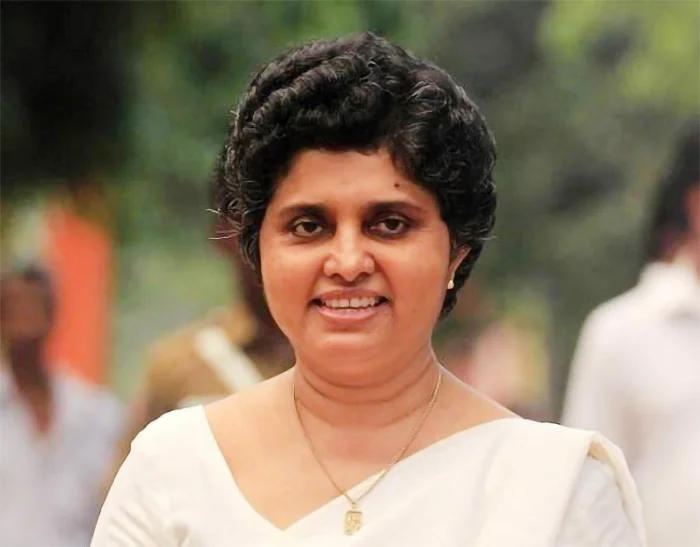
The late IGP Mahinda Balasuriya, who had been the Senior DIG in charge of the Central Province at the time of the ASP Kulasiri Udugampola’s raid on the DMI safehouse at the Athurugiriya Millennium City housing complex, in January 2002, categorised it as an excellent operation. Having commended Udugampola, Balasuriya directed SSP Kandy, Asoka Rathnaweera, to provide the required support to Udugampola. Rathnaweera issued the detention orders in terms of Prevention of Terrorism Act (PTA). Accordingly, six men, including Captain Shaul Hameed Mohammed Nilam (he now lives overseas with his family), and Subashkaran, were detained first at the Kandy Police Station and subsequently at Katugastota. High Court judge Patabendige mentioned this in his ruling, dated March 27, 2025.
Last week The Island examined the circumstances leading to a high profile police raid on a safe-house run by the Directorate of Military Intelligence (DMI) way back in early January 2002.
The article headlined, “Raid on ‘Millennium City DMI safe-house: A forgotten story,” dealt with the controversial but legitimate police action against the DMI in the backdrop of Colombo High Court judge A.K.M. Patabendige issuing an order to exonerate former Assistant Superintendent of Police (ASP) Kulasiri Udugampola accused of leading the raid that undermined national security.
At the time of the Millennium City raid, Udugampola had been the senior officer in charge of the Kandy unit of the Police Kennel Division.
The raiding party included Major Clifford Soysa of the Military Police. Major Soysa’s inclusion in the raiding party should be discussed, taking into consideration magisterial blessings to do so as he accepted police a complaint that the Army didn’t cooperate with an investigation into the killing of 10 Muslims and causing serious injuries to four more at Udathalawinna in the Wattegama police area on Dec, 5, 2001. Therefore, the raid on the DMI safe-house had been mounted, believing Chanuka, one of the then Deputy Defence Minister Anruddha Ratwatte’s sons, was hiding there. The police earlier searched Minister Ratwatte’s residence, Sinha Regiment camp at Yatinuwara road, Mahanuwara, and the Boyagane Army camp, in Kurunegala, looking for Ratwatte’s son.
The Millennium City case in which the State moved court against Kulasiri Udugampola was heard over a period of 20 years.
The acquittal of now frail Udugampola cannot be discussed without taking into consideration a far reaching Supreme Court judgement in respect of a fundamental rights application filed by five military personnel who had been attached to the raided safe house.
The SC bench consisted of then Chief Justice Sarath Nanda Silva, Justice Dr. Shirani Bandaranayake, who wrote the ruling with the other justice P. Edissuriya, also agreeing. Justice Bandaranayake said that due to the actions of Kulasiri Udugampola, and several other personnel under him, those who served the country at the risk of their lives were killed and others faced death threats. Kulasiri Udugampola was represented by Shibly Aziz and Faiz Musthapha.
Having ruled that the fundamental rights of the soldiers had been violated, the SC in January 2004 -two years after the raid – ordered ASP Udugampola to pay Rs. 50,000 each to Mohamed Nilam, P. Ananda Udalagama, H. M. Nissanka Herath, I. Edirisinghe Jayamanne and H. Mohamed Hilmy. The State was ordered to pay Rs. 750,000 to each of them as well. The State and Udugampola paid that amount within three months after the SC order. Each received cheques written in their names to the tune of Rs 800,000.
They received the cheques from the Registrar of the Supreme Court. The full extent of the damage caused by irresponsible action on the part of top UNP leadership as well as those in the Army and police, who callously undermined national security due to political reasons, professional jealousies as well as enmity caused by disciplinary action, has never been fully assessed, even after over two decades.
Arrested Army men and an ex-LTTEer Subahskaran were detained in early January 2002 at Kandy and Katugastota police stations. According to court records, the then Defence Secretary Austin Fernando refused to authorise Udugampola detaining them in terms of the Prevention of Terrorism Act (PTA) for a period of 90 days. However, they had been held under Detention Orders issued by Kandy-based senior law enforcement officers. But, Austin Fernando’s refusal to authorise invoking the PTA compelled Udagampola to hand them over to the Army.
This particular DMI operation involved both regular personnel, particularly Muslim officers, those who had switched their allegiance to the Army and informants.
The January 2 raid led to the arrest of Captain Mohamed Nilam, Staff Sgt. P. Ananda Udulagama, Staff Sergeant I. Edirisinghe Jayamanne, Corporal H.M. Nissanka Herath, Lance Corporal H. Mohamed Hilmy and a suspected LTTE operative, identified as Niyaz/Subashkaran. Others involved in that particular operation had been living in the East and were called into join operations depending on the requirement. On the instructions of Lt. Gen. Balagalle, those tasked with carrying out attacks on selected targets had an opportunity to train under Special Forces instructors from Maduru Oya. They underwent training at the Panaluwa Test Firing Range, where firing special weapons was a key element in the training schedule.
In a bid to ensure secrecy, those operatives mostly operated on their own, and had their own arsenal, which included a range of weapons, including claymore mines. In fact, those involved in the operation functioned on a need-to-know basis. Even senior DMI officials, as well as the Army top brass, except a few, weren’t aware of what was going on. Even the then powerful Deputy Defence Minister, Anuruddha Ratwatte, hadn’t been aware of the Millennium City safe-house, though he knew of the ongoing hits behind enemy lines.
“Those entering LTTE-held territory wore LTTE uniforms to avoid detection in case of coming across terrorists or civilians. We had about 100 uniforms, though the number of those conducting hits in LTTE-held areas was very much lower than the number of uniforms we had,” a person who had been with the DMI, said. “The operation was a new experience. It was to be a sustained assassination campaign, something we had never tried before. Had the politicians allowed it to continue, it could have had a devastating impact on the morale of the LTTE’s fighting cadre. The UNP never realised the dynamics of the DMI action.”
Shortly after the exposure of the DMI operation, Lt. Gen. Balagalle sought a meeting with then Premier Ranil Wickremesinghe to explain the secret operation against the LTTE. The Army chief had been accompanied by officials, including Hendarawithana, while one-time Attorney General Tilak Marapana, National List MP holding the Defence portfolio, and Minister Milinda Moragoda, too, were present.
“Except for Minister Moragoda, the others obviously didn’t realise what we were doing. They acted as if we were conspiring to do away with the political leadership so as to undermine the Norwegian initiative,” he said “We quickly realised we were up against a government, which simply wanted to negotiate a deal with the LTTE at any cost. The LTTE and the Norwegians exploited the situation to the hilt.”
A section of the media, too, campaigned against the Army, particularly the DMI chief Hendarawithana, who played a pivotal role in the intelligence set-up. He remained high on the LTTE hit list for over a decade. The LTTE went to the extent of exploring the possibility of having him assassinated in Colombo, with the help of an Army officer, who allegedly conspired with terrorists to kill Lt. Col. T. N. Muthalif in May 2005. The DMI head was constantly portrayed as a threat to the peace process and an obstacle to the UNP’s efforts to reach an understanding with the LTTE, regardless of the consequences.
In the run-up to the raid on the DMI safe house, an officer attached to the organisation had aroused suspicions due to his attempt to obtain the address of the safe house. He had casually made inquiries from those who were believed to be involved in the operation. Although not being successful, initially, the detractor had finally managed to secure the required information.
Having won the parliamentary election in Dec. 2001, the UNP unceremoniously terminated operations inside enemy lines, which could have helped the government debilitate the LTTE. The DMI never conducted operations involving ex-LTTE cadres again, though Lt. Gen. Balagalle got the DMI to launch an operation which enabled the Special Forces to carry out some devastating attacks on the enemy.
It would be pertinent to examine an operation launched in July 2001 by the DMI until its conclusion in December, 2001. In spite of the failure of the first and second operations in Batticaloa South to eliminate the intended targets, subsequent strikes sent shockwaves through the LTTE.
The first targeted assassination attempt was directed at an LTTE cadre, identified as Jim Kelly, on July 18, 2001, followed by a foray on September 12, 2001. The second operation targeted a military wing cadre, identified as Jeevan. On September 17, operatives carried out a successful attack on ‘Major’ Mano Master, who was at that time in charge of the communications network in the area.
The LTTE curbed movements of its senior cadres as it struggled to thwart infiltrators causing havoc in areas under its control. Despite a major surveillance operation, undercover operatives successfully ambushed Karikalan’s vehicle on October 18, 2001. The destruction of the vehicle fuelled speculation of Karikalan’s demise, with a section of the media reporting him killed in a special operation. Shortly after the attack on Karikalan’s vehicle, the Army intercepted a radio conversation between Karikalan and his wife, a medical doctor by profession, serving in the Northern Province. “She simply begged him to leave Batticaloa and take refuge in the North to avoid the Army’s deep penetration operations.
“We scored a significant success on Prabhakaran’s birthday on Nov. 26, 2001. Troops finished off ‘Major’ Swarnaseelan and ‘Captain’ Devadas in the Pulipanjikkal area. It was the last operation before the Dec. 5 General Election. In fact, we weren’t too concerned about the political factor,” the official said.
Unknown to the Army, the Norwegians, the LTTE and the government had been engaged in serious negotiations, with the Norwegians eyeing a comprehensive agreement. Due to unprecedented success in their strategy, the LTTE pushed for a specific clause, prohibiting forays by Deep Penetration Units.
Amidst a furore over the UNP allegations that the Army was conspiring to assassinate Wickremesinghe, operatives blew up a truck killing five LTTE cadres on Dec. 11, 2001. Then again, they destroyed an LTTE bunker, at the entrance to a base used by Karuna, in the Kokkadicholai area, on Dec. 21, 2001.
Some of those officers involved in special operations and ex-LTTE cadres had mutual trust and friendship. One of the ex-LTTE men, holding the rank of a ‘Major’ killed in an LTTE attack at Kalubowila, sometime after the exposure of the Millennium City safe house, had played a pivotal role in the DMI operations.
Having failed to persuade the ‘Major,’ known as Suresh, to poison one of the intelligence officers spearheading covert operations in the East, the LTTE sent a hit squad to finish him off. “In spite of being outnumbered, Suresh fought back courageously. When Suresh refused to open the door to admit strangers, whom he swiftly identified as assassins sent from the East, one of the armed men shot at the door lock. Reacting to the threat, Suresh had thrown a hand grenade at the raiders, though one of them swiftly picked it up and flung it away. The hit squad fled the scene after taking the target. During a routine search, we found a diary maintained by Suresh. According to his diary, Suresh’s wife had been in touch with the LTTE for some time. On the instructions of the LTTE, she had asked him to invite the officer, whom the LTTE considered as a major threat, to their Kalubowila home, where she planned to offer him poisoned cake. Suresh had met the intended target and made an attempt to brief him on the LTTE plan. Unfortunately, the officer had reacted angrily when Suresh sought a private meeting to discuss the issue. According to the diary, Suresh had left without revealing his secret.”
Suresh wrote in his diary that he didn’t want to carry out the LTTE order as the Army looked after him and his family well. Even after his killing, the Army continued to look after his children for some time, though they were subsequently handed over to their mother.
Despite the setback suffered due to the Millennium City raid, the Army gradually redeveloped its capability in conducting operations behind enemy lines, with significant success during General Sarath Fonseka’s tenure as the Commander of the Army. With the expansion of security forces’ frontlines as troops advanced on several fronts against the LTTE held Vanni region, those conducting operations behind enemy lines had a wider area to operate and relatively easy access and exit after a major hit as the enemy no longer had any respite to plan counter measures.
Perhaps the most important target that had been taken out on information received by the DMI before the UNP put an end to such operations was Vaithilingam Sornalingam alias Col. Shankar Sornalingam, a close confidant of LTTE leader Velupillai Prabhakaran. Special Forces targeted Shankar’s vehicle with a claymore mine on the Puthukkudiyiruppu – Oddusuddan road on the morning of Sept. 26, 2001. Nothing could have shaken the top LTTE leadership more than Shankar’s killing by Special Forces. That particular operation stunned the LTTE as it had come to consider itself as invincible, helped by supporting propaganda, especially from the West, and by willing so called defence experts at a stage of the conflict where the then government clearly, out of fear or lacking any feelings for the country, was literally suing for peace on its knees and busy negotiating with the LTTE through the Norwegians. This was clearly revealed by the one-sided ceasefire agreement, advantageous to the Tigers drawn up by the Norwegians and signed blindly by then Premier Wickremesinghe even without the knowledge of the then Commander in Chief President Chandrika Kumaratunga and much of his government. Not that she was more suited for the job as she being more or less like a proverbial busybody with no sense of time and only good for idle chatter most of the time. The intelligence needed for the hit on Shankar had been provided by an informant working for the DMI, who, in fact, accompanied the patrol tasked with the operation, though not being present at the time the target was taken, those who were involved with clandestine operations said.
During Eelam War IV (2006-2009), the Army expanded operations behind enemy lines. Special Forces veteran Major J.A.L Jayasinghe, who had spearheaded the attack on Shankar, was killed in what a colleague described as a suicide mission on the Vanni east front on Nov 26, 2008 in the Oddusuddan area. At the time of the death, Jayasinghe was attached to the 3rd Special Forces Regiment, which specialised in action deep inside the LTTE-held area. Twice honoured with Weera Wickrama Vibushana (WWV), Jayasinghe was promoted to the rank of Lieutenant Colonel, posthumously.
Since its inception, the DMI has steadily grown into a large organisation that played a critical role over the years. At the time the combined security forces brought the war to an end, the DMI had six units deployed.
The country’s premier wartime intelligence setup DMI suffered irreparable damage as a result of the January 2002 raid. Of the five men who received compensation in 2004, retired Sgt. Major Jayamanne committed suicide in Oct. 2016 at his Kegalle residence by hanging himself. He left a note accepting responsibility for the assassination of The Sunday Leader Editor Lasantha Wickrematunga in January 2009. P. Ananda Udalagama has been investigated for the abduction of Wickrematunga’s driver and the attack on one-time Divaina Editor Upali Tennakoon.
(Concluded)
By Shamindra Ferdinando
Midweek Review
Inequality is killing the Middle Class

Diary of a CitiBank Trader:
“I would like to have kids one day… and I’ll have to tell them, I made my money betting on the collapse of society, that’s the truth…”
–– Gary Stevenson
Gary Stevenson is a highly successful financial trader formerly employed at Citibank, in London’s historic central business district (CBD), colloquially called “The City”. A talented mathematics student, he earned a full-scholarship to the London School of Economics (LSE) and recalls noticing immediately that there were not many students at LSE with his background: “poor, working class” and even fewer at Citibank, where Stevenson earned an internship by winning a national mathematics contest. The 38-year old carries a strong East London accent that he admits made him stand-out quite a bit. Early on during his time at Citibank, somebody asked him “where’s that accent from, I love it”, he had to tell them that he was from East London, where they were standing, in Canary Wharf.
Speaking on a UK television interview show from February 2025, Stevenson says: “My YouTube channel, we got 1.2 million views yesterday in one day, ONE DAY… there’s a reason why I used to get paid 2 million pound-a-year to do this, because I’m [very] good at this okay, I shouldn’t be on YouTube, I shouldn’t be here, it doesn’t make no sense, I should be working for a hedge fund making 5 million pound-a-year… I’m here talking to you, talking to your audience because I can see… that the middle class, ordinary people, are going to be driven into desperate poverty…”
At Citibank in 2008, Stevenson earned a basic salary of GBP 36,000 but his first full-year bonus was GBP 400,000; he had amassed more money in 18 months than his father had in his entire lifetime. “Listen … these guys that tell you economics on the news, they get paid one hundred, two hundred grand a year, I got paid millions of pounds a year to do it because I’m the best at it and I still beat them, every year…The best economists in the world are all traders… the best-paid ten thousand economists in the world are all traders …”
By some estimates the Bank of England, the UK’s Central Bank, has injected around One Trillion Pounds (over GBP 1,000,000,000,000) into the UK economy since the 2008 financial crisis, during which period, living standards in the UK have been steadily deteriorating as a stagnant middle class struggles amidst a cost of living crisis.
The Uk are not alone, Governments and Central Banks around the world have injected hundreds of billions of dollars into their economies in the past two decades in response to extreme economic and social crises; eg: 2008’s financial crisis and the Covid19 global pandemic. The broad instruments were (1) quantitative easing (QE) – Central Banks purchasing financial assets such as government bonds and (2) direct fiscal ‘stimulus’ payments to business sectors and even individuals, usually funded by the Treasury.
In early 2011, Stevenson got called into a meeting with one of the Citibank’s top economists who went through the financial situations of a lot of the world’s major governments “so Italy, Spain, Portugal, Greece, Ireland but also the UK, US, Japan and what he said was basically, all of these governments are effectively bankrupt, they spend more than their income every year and they’re going further and further into debt… they’re being forced to sell their assets ….”
Where did all that Money go?
In response to the Covid19 pandemic of 2020, the UK Government engaged in QE using a 2009 program called the ‘Asset Purchase Facility’ (APF) and a fiscal stimulus called the Coronavirus Job Retention Scheme (CJRS) popularly known as the Furlough Scheme. The CJRS subsidised employee wages (up to 80% capped at GBP 2,500 per month), totalling GBP 70 bn from March 2020 to September 2021. The APF totalled GBP 450 Bn of UK Govt Bonds (and a small amount of UK Corporate Bonds) from 2020 onwards; the total portfolio peaked at GBP 895 Bn in late 2020 and was around GBP 680 Bn by end 2024.
Stevenson’s analysis suggests that QE has led to funds flowing into financial markets, inflating asset prices, be they stocks, bonds or property, thus disproportionately benefiting the owners of these asset classes – mostly the wealthy and ultra-wealthy.
Having graduated to a permanent position on the Trading Floor of Citibank in 2007, Stevenson’s job was to analyse and trade on interest rates. In the aftermath of the collapse of Lehmann Brothers, the US Federal Reserve slashed interest rates from 5% to 1% by October 2008 and before the end of the year rates were cut to a target range of 0.00% to 0.25%. In the UK, a similarly dramatic collapse of interest rates: 5% in October 2008 down to 2% in December 2008. Stevenson recollects that “suddenly, we’re all betting on when will the economy recover… bringing rates to zero is like an emergency measure… and the economic theory tells you this should cause a massive economic recovery and we obviously know now, it didn’t happen but at the time, every single year, the economists, the traders, the markets said: ‘next year rates will go up, which means next year the economy will recover’, literally every year 2009, 2010, 2011 all the way until 2020 and it wasn’t until Covid when they finally said, ‘okay rates will stay zero forever’ and then of course, rates immediately went to 5% ….”
This sequence of events suggested to Stevenson that, other than the elite Trading Desks of the world’s largest banks and hedge funds, most economists and market participants were not very good at predicting what would happen in their economies. “The way I became a millionaire is, after the financial crisis, I realised that because of a massive growth in inequality, we would basically never come out of that crisis and I started to put massive bets… that the economy would get worse and worse… and within a year of doing that, I became Citibank’s most profitable trader in the world ….”
The ‘Living Standards Outlook’ for 2023 by UK-based think-tank, Resolution Foundation, stated that “Absolute poverty is set to rise in the short-run, from 17.2 per cent in 2021-22 to 18.3 per cent in 2023-24 (or an additional 800,000 people in poverty). Child poverty in 2027-28 is forecast to be the highest since 1998-99, with 170,000 more children in poverty than in 2021-22”. The Joseph Rowntree Foundation states that “More than 1 in 5 people in the UK (21%) were in poverty in 2022/23 – 14.3 million people. Of these, 8.1 million were working-age adults, 4.3 million were children and 1.9 million were pensioners. A 2024 report by the Office for National Statistics (ONS) highlights that Real Household Disposable Income (RHDI) per person had grown at the slowest pace for the poorest 50% of the population and income inequality is widening, those in the lower 20% of the income distribution have seen stagnant or even falling real incomes over the last two decades.
A 2018 Bank Of England report titled, ‘The Distributional Impact of Monetary Policy Easing in the UK 2008 – 2014’, (Bunn et al) states that while in percentage terms, the gains were evenly spread, there were still major distributional issues such as wealthier households gaining more because they held more assets that appreciated due to QE: “the overall effect of monetary policy on standard relative measures of income and wealth inequality has been small.
Given the pre-existing disparities in income and wealth, we estimate that the impact on each household varied substantially across the income and wealth distributions in cash terms ….”
From Progress to Poverty
In 2014, ThinkTank, Centre for American Progress (CAP) released a report titled ‘The Middle-Class Squeeze’ submits that American “middle-class share of national income has fallen, middle-class wages are stagnant, and the middle class in the United States is no longer the world’s wealthiest… The cost of being in the middle class—and of maintaining a middle-class standard of living—is rising fast too ….”
In his 2019 book, ‘Third Pillar’, former Governor of the Reserve Bank of India, Raghuram Rajan discusses the impact of the middle-class squeeze on communities: “The anxieties of the moderately educated middle-aged white male in the United States are mirrored in other rich developed countries in the West… moderately educated workers are rapidly losing, or are at risk of losing, good ‘middle-class’ employment, and this has grievous effects on them, their families, and the communities they live in… as public anxiety turns to anger, radical politicians see more value in attacking imports and immigrants. They propose to protect manufacturing jobs by overturning the liberal rules-based postwar economic order, the system that has facilitated the flow of goods, capital, and people across borders”.
Stevenson notes that “we increased inequality at the fastest rate in the history of this country during a time when the economy was closed. Only luxury and non-essential spending reduced during covid; they gave money to furloughed workers, who… then had to spend most of it immediately to pay bills”. Furlough was not a gift but a replacement of a portion of wages of working people who transferred that to: landlords through rent, shareholders of Banks through mortgage payments and shareholders of energy companies through higher bills. Stevenson says the wealthiest in society earn massive amounts of passive income from the assets they own; monthly incomes so large it is impossible to spend it all on consumer goods so instead it leads them to hoard wealth by buying assets.
This correlates to rising house prices, which Stevenson analyses as occurring in a context where almost all other asset classes have seen broad and significant appreciation over the last 20 years: major stock indexes such as S&P 500, FTSE 100 and FAANG (tech stocks), Real Estate, Bonds (until the 2022 crash), Gold etc. Stevenson’s basic claim is that the ultra-rich are buying up all the assets with the excess liquidity and driving up the prices of those assets. “If you have the wealth of the rich going up 5% and an economy that’s growing at 1 or 2%, there is nothing they can do, they outgrow the economy. The rich are squeezing the middle class out.”
A Betting Man
Sri Lanka’s own growing wealth and income disparities are well-established. A December 2022 report by the Department of Census and Statistics (Dharmadasa et al) notes that “the highest 10 percent of the population shared 32 percent of total income in 2016 while the lowest 10 percent of the population shared 3 percent in the same year”. The World Inequality Lab states that the “top 10% of Sri Lankans… own 64% of all personal wealth; the top 1% have 15% of all income and 31% of all wealth. The bottom 50% of Sri Lankans have just 17% of all income and only 4% of all personal wealth”.
A report by the Centre for Poverty Analysis (CEPA) from January 2021 prior to the economic crisis and the worst impacts of the pandemic, states that, “more than half the total household income of the country is enjoyed by the richest 20%… while the bottom decile (poorest 20%) gets only 5%, with share of household income being just 1.6% for the poorest 10%.”
Dr. Vagisha Gunasekera, an Economist attached to the United Nations Development Program (UNDP), was quoted in a poverty report from 2023: “The top one percent of Sri Lankans own 31 percent of the total personal wealth, while the bottom 50 percent only own less than 4 percent of the overall wealth in the country. This provides us with a snapshot of how unequal our country is”. The UNDP report called Sri Lanka one of the most unequal societies in the South-East Asian region.
Gary Stevenson is part of a group of UK-based high net-worth individuals called Patriotic Millionaires who are campaigning for a minimum 1% wealth tax on wealth over ten million pounds: “if you were worth 12 million pounds you pay 1% on 2 million pounds, which is 20,000 a year”. This would only impact a very small portion of tax payers and would raise between 10 and 20 billion pounds annually; in a context where the new Labour Government under Prime Minister Starmer has announced plans to cut more than five billion pounds from its welfare budget by 2029/30.
Sri Lanka, almost 3 years after a once-in-a-generation economic collapse and an IMF-backed revenue-based fiscal consolidation program, has barely been able to improve its income tax to GDP, depending instead on VAT and other indirect taxes as well as excise duty on alcohol and cigarettes. Corporate Tax to GDP on average was 1.5% for ten years before increasing to 2% in 2024, woefully below what more successful countries in our development peer-group tend to generate. While the government lost some Rs. 950 Bn in tax revenues from corporates in the last 21 months due to incentives, the working people of Sri Lanka continued to carry the burden of government revenue growth through VAT. Health, education systems are crumbling, more than 50% of households receive cash stipends from the government while demand for luxury vehicles remains, with depreciating assets like luxury SUVs priced at the same level as a luxury condominium unit in central Colombo. The prevalence of these dynamics and what it says about the internal economic distribution systems point to unsustainable economic arrangements and asset bubbles amidst rising income and wealth inequalities.
Stevenson notes that “My dad lived in an era of house price two-times income, I live in house-price 20-times income, my kids will live in 40-times income…” The point is simple: inequality is driving a historic concentration of wealth at the top of income and wealth structures. “Nobody likes paying tax, but the fact of the matter is, the wealth of the middle class and the wealth of the government is being drained by this super-rich group, how do we get it back? Rishi Sunak is worth 700 million pounds, that means he has a passive income every year of 30 million pounds… they use their passive income to buy more assets… tax is the only way that you, a regular working person, can protect yourself from the superrich”.
What makes Stevenson a fascinating and effective messenger is that he is still trading, making bets on the economy: “I don’t get paid to have opinions… I was one of the best paid and most successful traders in the world at one of the biggest banks in the world, I place bets and l’ve been betting for 14 years that the working class in my country and the working class in your country will collapse into desperate worsening poverty year after year and, I’m a multi-millionaire from doing that… I don’t just say this, I don’t just come on here and give my opinions, I’m betting on everything I’ve told you today….”
The writer has 15 years of experience in the Financial and Corporate sectors after completing a Degree in Accounting and Finance at the University of Kent (UK). He also holds a Masters in International Relations from the University of Colombo.
He is a media presenter, political commentator and Foreign Affairs analyst, invited regularly on television broadcasts as a resource-person.
He is also a member of the Working Committee of the Samagi Jana Balawegaya (SJB).
By Kusum Wijetilleke
kusumw@gmail.com
Twitter: @kusumw
Midweek Review
Of Books and Bread

By Lynn Ockersz
A learned judge across the Palk Strait,
Had certainly got his basics in place,
When he held for the primacy of Bread,
And received wisdom freshly upheld,
That it is to the eatery and not the library,
That a starving human drags himself,
Thus putting to rest at first blush,
The Bread or Books first debate,
But rush not to conclusions in this instance,
For, while Bread satisfies the physical self,
It’s Books that nourish the heart and mind,
So, let not Books and Bread futilely contend.
-
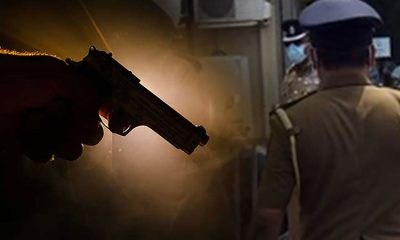
 News5 days ago
News5 days agoSuspect injured in police shooting hospitalised
-

 Features6 days ago
Features6 days agoRobbers and Wreckers
-
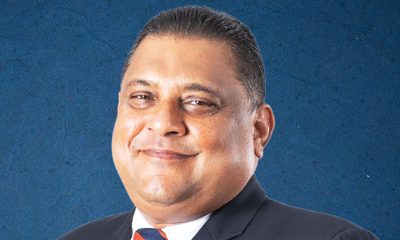
 Business6 days ago
Business6 days agoBhathiya Bulumulla – The Man I Knew
-

 Business5 days ago
Business5 days agoSanjiv Hulugalle appointed CEO and General Manager of Cinnamon Life at City of Dreams Sri Lanka
-
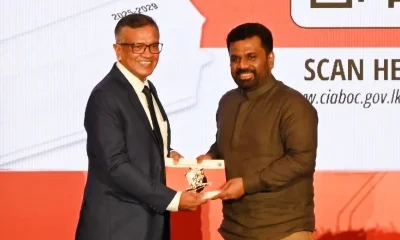
 Business7 days ago
Business7 days agoNational Anti-Corruption Action Plan launched with focus on economic recovery
-

 Features4 days ago
Features4 days agoLiberation Day tariffs chaos could cause permanent damage to US economy, amid global tensions
-
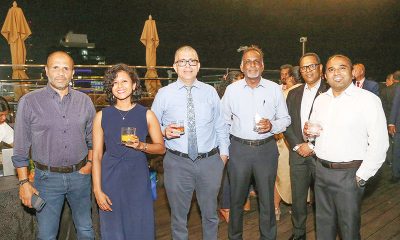
 Business4 days ago
Business4 days agoMembers’ Night of the Sri Lanka – Russia Business Council of The Ceylon Chamber of Commerce
-
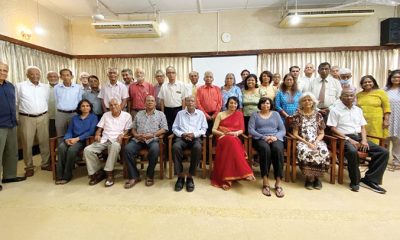
 Features4 days ago
Features4 days agoMinds and Memories picturing 65 years of Sri Lankan Politics and Society











